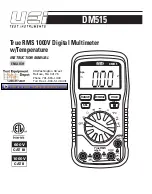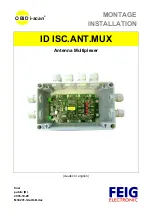
342-86400-498PS
Issue 1.2
April 2012
Page 12
Copyright
GE Multilin Inc. 2010-2012
Supports VLANs
o
Ability to share the allocated STS-1 SPE(s) between multiple sets of
bridged LANs. Privacy is maintained between the different sets.
o
Supports up to 60 „Distributed Port-based‟ VLANs (D-PVLAN) for
guaranteed isolation of traffic between ports with different D-PVLAN
membership assignments. D-PVLANs are pre-assigned to the four
TDM pipes in sets of 15. Each provisioned Ethernet access port
requires a D-PVLAN assignment (1-60).
o
Supports D-PVLAN trunking (ability to assign multiple D-PVLAN
memberships to a port). On a D-PVLAN trunk, all frames are
802.1Q tagged to distinguish between different D-PVLANs.
o
Allows transparent transport of Ethernet frames with 802.1p and
802.1Q VLAN tags including frames with “QinQ” nested (stacked)
802.1Q tags (up to 28 levels of “QinQ” nesting; max frame length is
1632 bytes).
o
Optional QVLAN filtering (per port)
Supports all 4000 802.1Q VLANs, with up to 50 user-
configurable QVLAN memberships per port.
Applied to both ingress (input) and egress (output) frames.
Configurable per-QVLAN output tagging (available when QVLAN filtering is
enabled). Allows for adding ("pushing") a tag to untagged frames or
removing ("popping") the outer
2
tag from tagged frames at egress.
Powerful MAC address management
o
A 32,768-entry MAC address table in the ETHER-
1000 unit (“WAN”
switch).
o
Built-in 8-port Ethernet Layer-2 switch on the base paddleboard
(“LAN” switch) with 8192-entry MAC address table.
o
User-configurable aging time for learned MAC addresses (ranging
from 30 seconds to 1 hour, or never).
o
Configurable static (not aged) MAC addresses, 20 per port, stored in
flash.
o
MAC address learning and sorting per D-PVLAN and QVLAN allows
for independent routing of frames in different VLANs even if their
source/destination MAC address is the same.
3
o
Per-port configurable learning mode for
No Blocking
or
Secured
(blocking, with static and pseudo-static
4
MACs not blocked).
2
In QinQ frames, the outer tag (tag#1) is the one closest to the Ethernet header. The inner tag is
the one closest to the payload portion of the frame.
3
Some limitations apply. See
MAC Address Management
section.













































